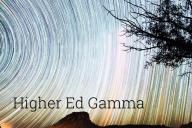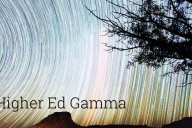You have /5 articles left.
Sign up for a free account or log in.
From flawed creators come timeless insights. From scoundrels come works of genius. Immoral artists often speak immortal truths.
This isn’t accidental. It’s the very imperfections of great authors, artists and composers that allow them to reveal hidden truths about our shared humanity. Their moral shortcomings—whether they are rogues, rascals, bigots or worse—don’t diminish the value of their works. Instead, these flaws enhance their ability to speak to the complexity of the human experience.
Great artists and thinkers possess an uncanny ability to transform their personal struggles, contradictions and darker instincts into works of art that transcend time and culture.
These creators offer more than just artistic brilliance—they serve as mirrors to our own interior lives. Through their characters and stories, we encounter our own moral ambiguities, fears and desires, which often remain hidden beneath the surface of polite society. It is precisely their willingness to confront the bleaker aspects of life and human nature that makes their work resonate so powerfully.
Many great artists are under intense moral scrutiny: “Dickens was a scoundrel, Tolstoy an exploitative sex addict, Alice Walker an antisemite.” Fyodor Dostoyevsky, addicted to roulette, reduced his family to poverty, going so far as to pawn his wife’s ring and coat.
Allan Stratton, the Canadian playwright and novelist, offers one of the most compelling arguments that I have read for why we shouldn’t cancel authors for their ideological or moral failings. Because it is those very failings—and their willingness to expose them—that are often the source of their art.
And yet, we must also hold authors, as human beings, accountable for their personal behavior.
A great artist’s imperfections don’t make their art any less profound; in fact, they make it more relevant. Literature from deeply flawed individuals is a reflection of human frailty, providing insight into the universal emotions and experiences that define our lives. These works become vehicles for exploring primal instincts, traumas and shared fears that, though uncomfortable to confront, are fundamental to the human condition.
Just as Dostoevsky was able to articulate the inner turmoil of addiction, so too have other flawed artists exposed the hidden forces driving human behavior. Their works transcend their creators’ moral failings because they speak to the base instincts, fears and desires we all share. Through literature and art, we are given a safe and imaginative space in which to confront our own flaws and fears, allowing for reflection, self-awareness and growth.
Art invites us into the world of others, even if those worlds are morally questionable. In doing so, we are temporarily taken out of ourselves, opening a space for empathy and deeper understanding. As Stratton explains, empathy is the foundation of the arts. “No matter our race, gender orientation, age or other differences, each of us has felt every emotion and has known both grace and despair.”
Art connects us across cultures and eras because it taps into universal human experiences, impulses and emotions. While the personal circumstances of artists may vary widely, their ability to convey shared human emotions allows us to see ourselves in their work. Whether it’s the anguish of a Dostoyevsky character, the moral struggle in Tolstoy’s writings or the complex relationships depicted in Walker’s novels, we recognize aspects of our own experience in their work.
“To create believable, psychologically complex characters—especially when those characters are repellent and break social taboos,” Stratton writes, “requires ruthless self-examination.” Great writers must confront and explore their own inner flaws, moral failings and darker impulses to authentically depict characters with similar traits. The act of creating such characters is not just about addressing controversial or difficult topics, but about exposing the author’s own vulnerabilities, struggles and imperfections.
To craft psychologically complex characters, the novelist must dig deep into their own psyche, investigating their personal obsessions, insecurities and moral shortcomings. This kind of self-exploration is raw and demanding, as it forces writers to acknowledge aspects of themselves they may prefer to avoid.
Often, novelists’ ability to portray flawed, repellent or taboo-breaking characters comes from their intimate understanding of imperfection, which they derive from their own inner flaws. Artists project parts of themselves into the characters, creating a deeper connection between their own struggles and the struggles they depict in their work.
True courage in artistic creation is not merely tackling difficult or controversial subjects but exposing oneself. Novelists like Dostoyevsky, for example, aren’t brave simply because they write about morally complex or disturbing subjects; they are brave because, in doing so, they expose their own inner darkness, their capacity for failure and their own moral ambiguities. By revealing their own flawed humanity, they make their characters more authentic and psychologically rich.
The darkness in art reflects the unfiltered darkness in ourselves. For, as Augustine, Hobbes, Kant and Schopenhauer understood, we are all flawed, whether as a result of Adam’s disobedience or our propensity to prioritize self-interest or from fear, competition, pride or a desire for power. For all their differences, these thinkers converge on the realization that imperfection is intrinsic to the human experience.
For Augustine, humanity’s imperfection is not just a moral failing but a fundamental aspect of humanity. It is through recognizing this inherent weakness that individuals are driven to seek grace and redemption through spiritual transcendence and divine aid. The acknowledgment of sin and error is necessary for growth and thus, greatness emerges not despite our flaws but through our struggle with them.
According to Hobbes, even though people are naturally driven by fear and self-interest, it is through these very flaws that society and governance arise. Human agency is revealed in the ability to transcend the chaotic state of nature and form political structures that ensure security and stability, allowing civilization to flourish.
Kant, in turn, believed that the greatness of the human spirit lay in the human capacity to overcome our natural inclinations and rise above selfish desires and act according to universal moral principles.
For Schopenhauer, humanity is fundamentally flawed because we are driven by an irrational, blind will. This will to live manifests as endless striving, desire and suffering, as humans are never fully satisfied with what they have and are always seeking more. Life is filled with suffering because of this insatiable will and human existence is marked by frustration and dissatisfaction. However, he also that human beings could transcend this will through art, philosophy and asceticism. By recognizing the flaws and suffering inherent in life, individuals can achieve a higher state of awareness, in which they are no longer enslaved by their desires.
In the context of art, the imperfections and flaws that are intrinsic to the human condition can become a source of great insight and creativity. Artists, writers and composers often draw from their own inner darkness—struggles with desire, fear, competition or the search for meaning—to create works that resonate universally.
It is from these very flaws that light emerges, illuminating aspects of human nature that might otherwise remain hidden. By confronting the complexities of the human condition, artists offer profound insights into the nature of existence. It is the exploration of flaws and frailties—whether moral, psychological or existential—that leads to the most profound insights into human nature. Great works transcend the personal imperfections of their creators because they tap into the universal flaws that define the human experience.
Human imperfection is not a limitation but a source of insight, creativity and self-transcendence. Artists and philosophers alike tap into this shared understanding of the complexities, conflicts and contradictions of the human condition, showing that imperfection—whether moral, psychological or existential—can be the key to revealing deeper truths.
The imperfections of great artists allow them to serve as mirrors to our own humanity, illuminating parts of ourselves we might otherwise overlook or suppress. Freud’s exploration of the unconscious mind, for example, offers a framework for understanding the drives and impulses that motivate our actions. Freud’s view that “bad men do what good men dream” speaks to the universality of these primal instincts, which all humans share.
Artistic expression, much like psychoanalysis, allows us to confront these base desires and to reflect on the nature of human imperfection. The darkness expressed in art—be it the selfishness, fear or desire for power described by Hobbes or the striving and suffering of Schopenhauer’s will—serves as a means for exploring our shared human flaws.
In the end, it is from the imperfections of artists that their greatest insights emerge. These flaws do not diminish greatness; they reveal it. They allow the artist to explore the full range of human experience, from our highest virtues to our deepest fears and darkest impulses. Great literature, music and art transcend the personal failings of their creators because they speak to the universal truths of the human condition.
By engaging with flawed creators and their works, we gain not only a deeper understanding of the world around us but also a clearer sense of ourselves. It is through their darkness that we are able to confront our own and through their art, we find a path toward empathy, reflection and growth. Imperfection is not something to be hidden or shunned; it is a source of creative depth and insight, offering us a profound connection to the shared humanity that binds us all.
Which brings us to the true nub of a major literary controversy. Stratton’s essay has been interpreted as a defense of something unforgivable: How the Canadian Nobel laureate Alice Munro stood silent when her second husband sexually abused her youngest child and later claimed that the daughter hadn’t been badly harmed since she seemed to have been happy as a child.
My sense is that Stratton is not trying to defend Munro’s alleged complicity in the sexual abuse of her daughter. Instead of endorsing or excusing Munro’s actions, Stratton is emphasizing the complexity of human morality and the tension between personal loyalty, flawed judgment and the broader implications of how we respond to troubling situations. He argues that Munro’s silence and inaction reflect a deeply human tendency to fail in morally challenging situations, rather than a simple betrayal.
Stratton acknowledges the horror of what happened to Munro’s daughter, but he stresses the importance of empathy and understanding of Munro’s situation. He suggests that Munro’s decision not to leave her second husband wasn’t a matter of choosing him over her daughter, but rather her inability to reconcile these two roles—wife and mother. He points out that Munro, like many of her fictional characters, is not reducible to a single moral failure.
Stratton contrasts how we, as readers, celebrate Munro’s ability to create deeply flawed and complex characters in her fiction while failing to extend the same empathy toward her as a person. He argues that we often find humanity in fictional characters who commit terrible acts but are quick to cast judgment on the real-life individuals who, like Munro, are similarly flawed. In Munro’s case, he implies that her love for her husband, despite his actions, is not dissimilar from how we often forgive others—and ourselves—for moral failings.
Stratton suggests that life is more morally ambiguous than we often admit.
Throughout his essay, Stratton emphasizes the role of art in helping us understand human nature, including our capacity for moral failure. He asserts that the humanities teach us not to reduce people to their worst actions but to look for grace and understanding in difficult situations. This, he argues, is the true value of literature and art—to help us grapple with these moral ambiguities and resist the urge to cast simplistic, punitive judgments.
Stratton has written a call for empathy, understanding and a recognition of the complex and often morally ambiguous nature of human beings. He suggests that just as Munro’s stories explore flawed and deeply human characters, we should approach her actions with a similar lens of complexity and forgiveness, recognizing that no one is defined solely by their worst moments.
While I was totally convinced by Stratton’s abstract argument—that great authors’ flaws are part of what allows them to shed light on life’s underside—I do regard his essay as a thinly veiled defense of Munro that failed to grapple sufficiently with her complicity in her daughter’s sexual abuse.
How should I or you, grapple with this tension?
The contradiction between appreciating the general truth of Stratton’s argument while being unsettled by his apparent defense of Munro’s actions offers a valuable opportunity for critical reflection.
Stratton’s abstract argument—that the personal flaws of great artists give them insight into the complexities of human nature—may hold true in the realm of literature. Many great novelists do explore moral ambiguity, flaws and darkness in ways that resonate deeply with readers, precisely because they draw from their own imperfections.
However, applying this reasoning to real-life ethical situations like Munro’s complicity in her daughter’s abuse is much more fraught. While personal flaws may help a writer create compelling art, they do not excuse or absolve real-world actions or inactions, especially when they have such damaging consequences.
In literature, flaws can be explored without real-world repercussions; in life, they have tangible effects on others, especially vulnerable individuals like Munro’s daughter.
You may agree that authors like Munro, Dickens or Tolstoy, through their personal flaws, can better capture the complexity of human nature in their fiction. However, moral accountability remains a separate issue from artistic complexity. While Munro’s personal flaws may have enriched her fiction, her responsibility as a mother and her failure to protect her child must be considered independently of her artistic achievements.
Stratton’s essay does not sufficiently address this gap between moral failure in real life and artistic expression of human flaws. You might recognize the validity of his abstract point while feeling that it does not adequately grapple with the gravity of Munro’s actions as a parent.
Stratton’s call for empathy and understanding of Munro’s complexity as a person can be valuable, but it also has limits. Empathy for a flawed artist should not come at the expense of recognizing the harm done to others, particularly when those harmed are vulnerable, like Munro’s daughter.
I feel that Stratton’s essay leans too heavily on understanding Munro’s motivations without fully grappling with the moral obligation she had to protect her child. While empathy is important, it should not diminish the seriousness of her complicity or the impact of her actions on her daughter’s life.
Stratton’s essay treads close to excusing harmful behavior under the guise of complexity and personal flaw. While it is true that no one is only one thing, and that artists are often complex, flawed individuals, that does not mean they should be shielded from criticism or held to a lower standard of moral accountability.
We should think rigorously about whether Stratton’s argument risks romanticizing personal flaws in a way that could inadvertently minimize or excuse harmful behaviors, especially in cases of serious wrongdoing like abuse or complicity in abuse.
There is a way to hold both truths in balance: You can appreciate the abstract argument that personal flaws contribute to artistic insight while simultaneously acknowledging that in the realm of ethics, Munro failed to protect her daughter. These two realities do not have to cancel each other out, but they do require separate lines of thought and analysis.
You can celebrate Munro’s literary achievements while also holding her accountable for her personal failures. Artistic greatness does not exempt individuals from moral accountability.
The key is to separate the personal flaws that enrich artistic work from the moral obligations that individuals bear in real life. A great artist’s insight into human darkness does not excuse their real-life failures, especially when those failures cause harm. In the end, it’s possible to appreciate Munro’s artistic legacy while still holding her accountable for her personal actions.



